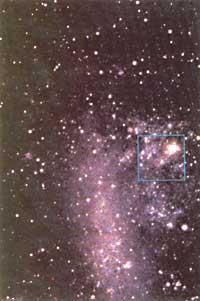Neutrino, the key to the universe
1989/09/01 Legarreta, J. A. Iturria: Elhuyar aldizkaria
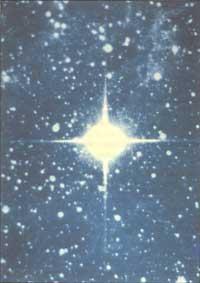
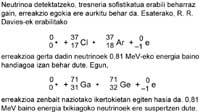
(Note: To see the text go to pdf).
Leucipo of Miletus and his disciple were the Greek philosophers Democritus. IV. Since the concept of atom was introduced in the 20th century many years have passed. Until at the beginning of the 20th century the internal structure of the atom is determined. Many researchers on the structure of the atom (Thomson, Rutherford, Bohr,...) have formulated different theories and today we have the idea that the atom is a planetary system, in which the sun is replaced by the nucleus and planets by electrons. Therefore, the atom has two parts: the core and the layer. In the nucleus are the proton and neutron, where the mass and positive charge of the atom is found. In the layer, however, electrons are located, which rotate in the orbits around the core.
However, Henri Becquerel detected in 1896 that the nuclei of certain elements, when disintegrated, emitted electrons. But if there are no electrons in the core, why do they emit electrons? In order to answer this question, we should look at the values of the masses of poison, neutral and electron that are part of the atom. In fact, the neutron mass is greater than the sum of the proton and electron masses. Therefore, by means of neutron, that is, by “breaking” the neutron, a proton and an electron can be formed.
After proposing this idea, the behavior of the neutron separated from the nucleus was analyzed in a few years. It was concluded that an uninteracted neutron in no case disintegrated in about 15 minutes, forming a proton and an electron. However, we should not think that neutrons of all nuclei disintegrate. If the nucleus had excessive neutrons, they would disintegrate until the excess neutrons disappeared. By disintegrating the neutron from a nucleus, the nucleus will have one more proton and the electron will be spilled. This process of disintegration of the nuclei is called emission .
In the following years, an energy balance of the multi-core emission process, B, was made, and the researchers found that the amounts of energy and mass were not along the reaction. As is known, from the physical point of view, energy should remain constant throughout the reaction.
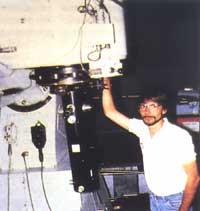
Faced with this, the Austrian physicist Wolfgang Pauli stated in 1937 that the energy lacking in reaction was dragged by a new particle that could not be seen in the process of emission of . This new particle was attributed very strange characteristics, although it was not detected in the emission of . It had no loads or masses and moved through the speed of light. Given these characteristics, it is not surprising that it was not detected that it was an existing tool at the time. Enrico Fermi named this new particle neutrino, and according to his calculations, neutrinos emitted by radioactive nuclei would pass through a group of water 109 times the distance between Earth and the Sun without any interaction. It was thought that neutrino detection would be very competitive. So the physicists left the theoretical work and began experimentation.
At that time, the investigation of fission nuclear reactors was very advanced. As is known, throughout the process of disintegration of the uranium element used in nuclear reactors beta-emitting elements are generated. Therefore, given the unbeatable source of neutrinos, they began the detection process. In 1946 Bruno Pontecorvo prepared the first neutrino detection session. But it failed because it detected nothing. Due to advances in particle physics, physicists demonstrated that neutron disintegration caused antineutrine to appear instead of neutrino. And Pontecorvo's session was to detect the neutrino.
Clyde L. Cowan and Frederick W. B. Reines After learning about the Pontecorvo session, an experiment for the detection of antineutrine was projected at the American research center Los Alamos, using the nuclear reactor located in South Carolina. This nuclear reactor emitted 1013 antineutrines per square centimeter and per second.
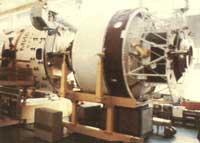
Therefore, although interaction with neutrino matter was very scarce, it was thought that of so many neutrinos one could detect one or the other. To avoid interference phenomena from the cosmic and background radiation of the nuclear reactor, the detector was protected with a layer of metal and earth and introduced into a deep mine. Three years later they received the payment of their efforts. Three antineutrines per hour were detected in 1956. In fact, 25 years have passed since Pauli announced the existence of this new particle.
For physicists the next challenge was to catch the neutrino. Since 1956, due to the rise of astronomy, great advances were made in the knowledge of stars, such as the demonstration that the main component of the stars was hydrogen, which in most cases originated in 70% of the mass and in the fusion reactions that occur inside the stellar energy, giving rise to numerous neutrinos. According to the theoretical calculations made, about 109 neutrinos per hour and square centimeters arrive from the Sun to the Earth. However, if the discovery of antineutrine was complicated, the process of detection of solar neutrinos was also expected to be competitive.
Raymond R of the National Laboratory of Bruokha since 1955. American researcher Davis became involved in the research of solar neutrinos. In 1968 he published his first results and Davis measured less than half the number of neutrinos announced by theoretical calculations. Given this result, the researchers presented all kinds of explanations. Some considered that a theoretical model should be discarded to explain the process of fusion that occurs inside the sun. Others said the neutrino mass was not null.
Currently, the question of neutrine remains a problem that physicists use several projects. For example, some sessions with gallium detectors have shown positive results. Experiments based on gallium detectors are quite advanced at the Max Planck nuclear physics institute in Heidelberg. On the other hand, in the Italian tunnel of Gran Sasso, around 1990, a sophisticated instrumentation by gallium is planned. In the Soviet Union physicists work on the research of neutrinos with low energies. As you can see, there is no lack of projects and we can be very excited in the case of neutrino.
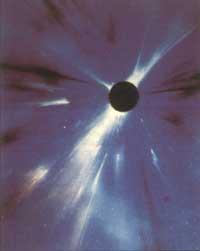
In fact, advances in astronomy and astrophysics in recent years have shown that the role of neutrinos in the knowledge of the universe is increasingly evident. Recently astrophysicists have achieved a theoretical model of how the evolution of stars occurs, although there are still some incidents to explain. The importance of neutrinos in the evolution of stars has recently been demonstrated. The star is born and the fusion reactions of hydrogen begin as the main component of it, forming helium.
Hydrogen runs out and helium fuses. And so follows the star in its evolution until fuel runs out. In the last era of evolution protons and electrons come together forming neutrons and neutrinos. Neutrinos at that time leave the inside of the star at the speed of light and move through space. At that time the star explodes and this phenomenon is known as supernova explosion. From the point of view of neutrinos, the supernovel of a star and its explosion are very important, on the one hand because in those two moments a lot of neutrinos is produced and, on the other, because they carry with them most of the energy of the star.
On February 7, 1987, the explosion of a supernova was first detected and researchers from neutral observatories in Japan, the Soviet Union, Italy and the United States started their teams. Although neutrino “hunters” detected two sets of neutrinos in four and a half hours of interval, and did not know any specific cause of detection of both groups, studies on this phenomenon continue. The neutrinos of this supernova allow us to know the origin and future of the universe.
Remember that the universe is not static and that since the Big Bang or the Big Bang is constantly expanding. But today's astrophysicists wonder if the universe constantly expands or stops expanding and contracts. To answer this question we should know the density of the matter of the universe and the relationship between the density or the rhythm of its expansion. Since the intensity of expansion depends on the density of the universe, it corresponds to a certain value of density, called critical value.
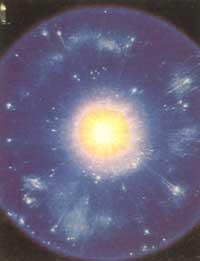
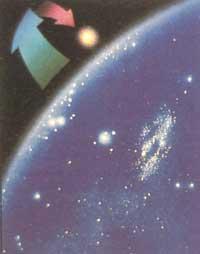
According to mathematical developments by astrophysicists, the density of the universe is 10 times lower than its critical value. Therefore, gravity will not paralyze the expansion of the universe. However, for each proton and electron that was formed when a big explosion occurred according to the Big Bang, 109 neutrinos were formed and, despite their low energy, they are still moving through the universe because, as already mentioned, they interact very little with matter. And also, considering the heap of neutrinos that has been formed from the birth of the universe until today (15x109 years) and if the neutrina had mass, it would have been in neutral masses of the universe, that is, it would have twice the mass that is usually attributed to the universe, with a density greater than the critical value. Therefore, the contraction process could be stimulated.
But do neutrinos have mass? Due to the lack of experiments with neutrinos, astrophysicists today have no solid evidence when they bear fruit on this issue. Although neutrinos were until recently considered to have no mass, some experiments conducted by physicists at the University of Moscow in 1980 have revealed that that old judgment may be wrong. According to the results obtained in these experiments, the neutrino (27.9 eV) has been accused of resting mass of 5 x 10–35 kg.
Despite being very small compared to the masses of other known particles, the density of neutrinos in the universe (109 n/m3) is high, so the mass of all neutrinos could be greater than that of all stars. If University of Texas physicists estimated that the mass of neutrino was 5 x 10–34 kg, for example, galaxy formation would be different and would significantly affect the process of universe expansion. Therefore, it must be taken into account that the experiments to be carried out in the calculation of the neutrino mass must be carried out with great precision.
On the other hand, if it is not possible to detect neutrinos produced by the great explosion, we could affirm the ideas that the Big Bang theory predicts for the first second of the universe. Because these neutrinos have very little energy, they will be difficult to detect due to current instrumentation. For many, neutrino is a “dark mass” that can cause a gravitational attraction that slows the expansion of the universe and stimulates contraction. As you can see, we are at the beginning of neutrino astronomy.
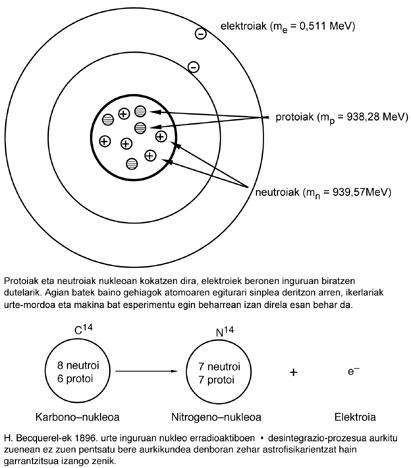

Gai honi buruzko eduki gehiago
Elhuyarrek garatutako teknologia




